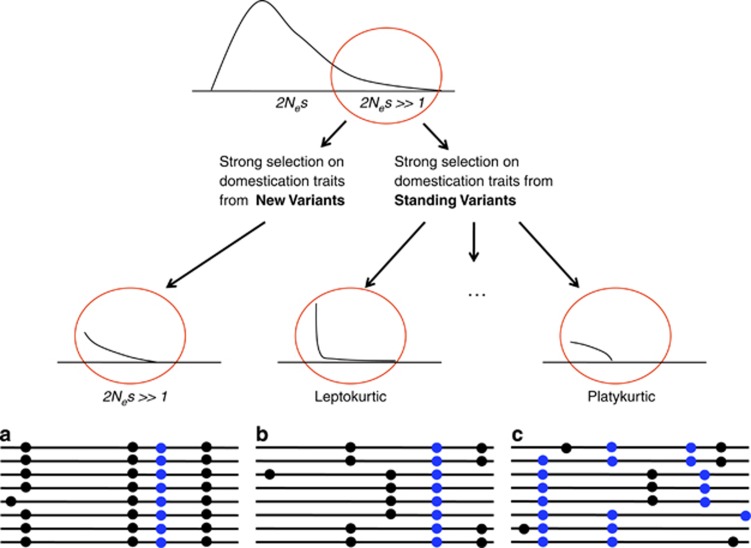Figure 4.
Diagram for hypothetical cases of selective events occurred via domestication under different scenarios. The top cartoon displays the distribution of 2Nes, the red circle shows the distribution of variants that are beneficial in the domesticated environment. The bottom drawings represent sequencing alignments for domesticated individuals. Blue spots represent beneficial variants in domesticated environment and black spots represent neutral variants. (a) Selection for domestication traits is mainly acting on new beneficial variants. These variants are selected starting from low frequencies and their frequencies increase rapidly. A drop in the levels of variability is expected. Given the short time since domestication, it is expected that most of these selective variants may be harmful in a wild environment (loss-of-function variants). (b, c) Standing variants segregating at wild populations mainly drive selection for domestication traits. Variants that are beneficial in a domestication context can segregate at any frequency. If only few variants contribute with major effect on the trait (b), we expect to find selective sweeps with a moderate reduction of variability. In the other extreme case, that is, if most variants have a modest effect on the trait (c) no strong selective sweeps are expected.

